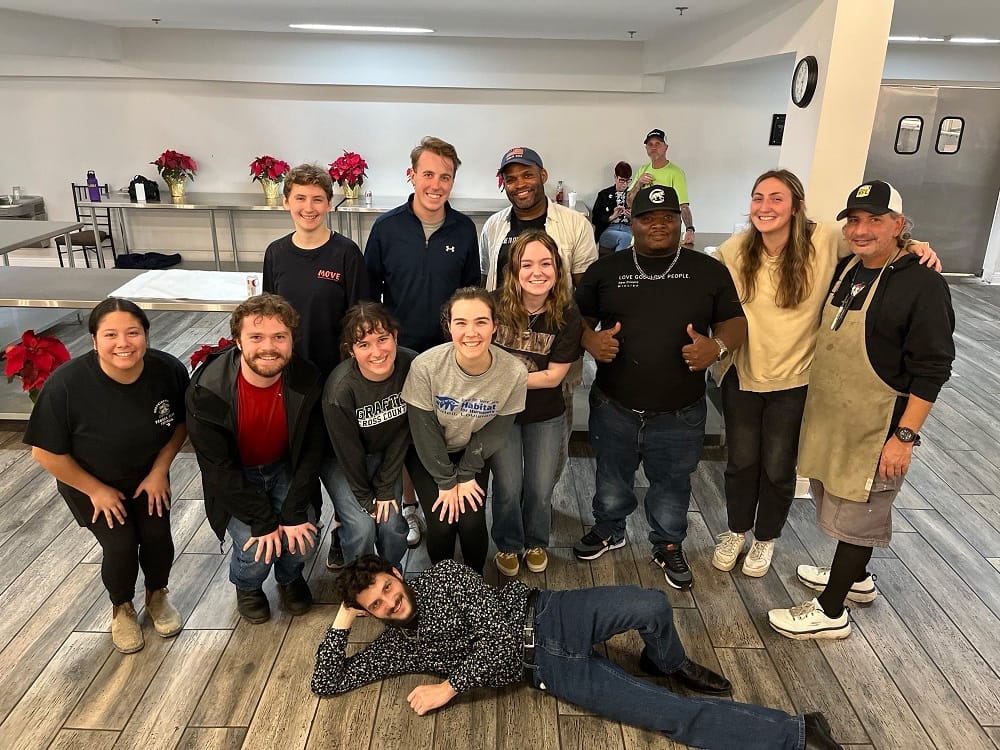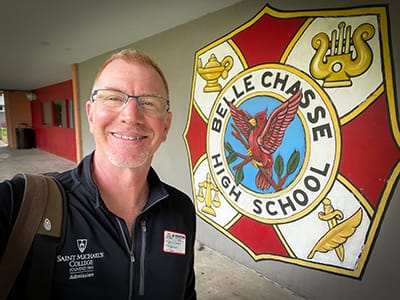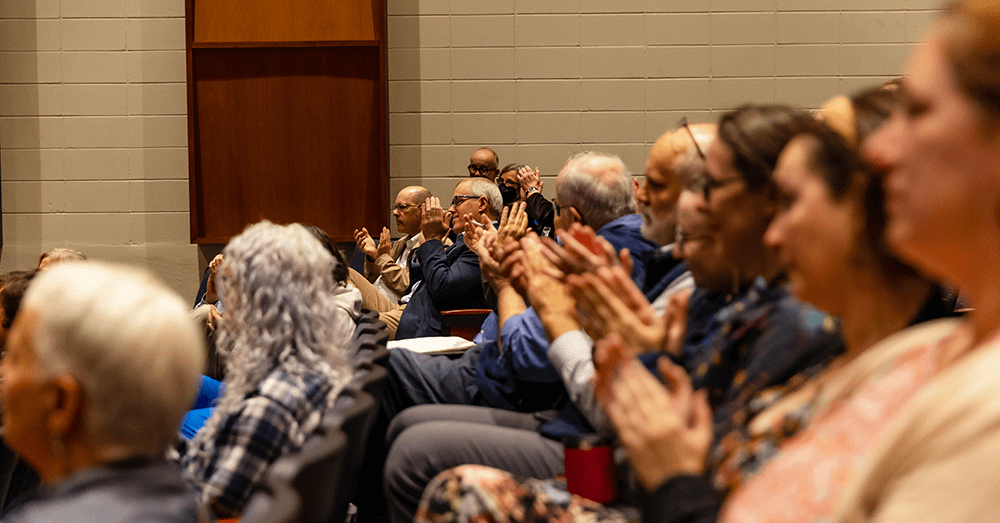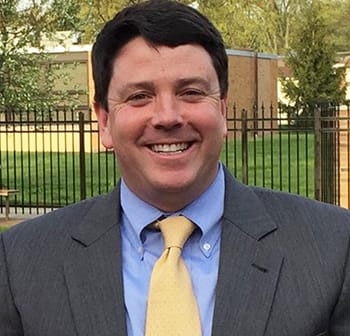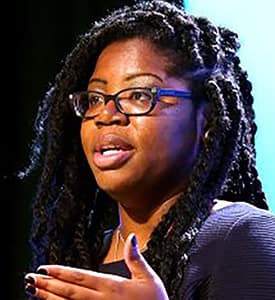Summer research projects arise thanks to funds, creative mentors
Professors in chemistry, math and physics tap major NSF grant to pay three students for online work, even during pandemic that cancels earlier plans
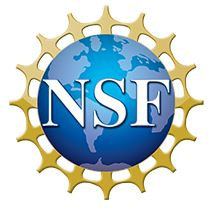 The COVID-19 pandemic has not stopped three Saint Michael’s students from doing meaningful summer research at the intersection of scientific and “quantitative” majors like math and statistics.
The COVID-19 pandemic has not stopped three Saint Michael’s students from doing meaningful summer research at the intersection of scientific and “quantitative” majors like math and statistics.
Key elements behind the opportunity are a $1 million National Science Foundation federal grant awarded to the College two years ago that aims to advance such connections and is able to pay stipends to the students as a summer job for their projects. The work is guided by faculty mentors willing to creatively go the extra mile for their students when circumstances change.
The researchers came to their projects differently: Two changed plans on the fly when the pandemic canceled their original, more far-flung prestigious summer research opportunities outside Vermont, while the third took his project up unexpectedly when invited by a faculty member. In light of the pandemic, the trio has been diving this summer into projects that can be done largely from home through online cooperation with their mentors. They are:
- Mitchell Andrea, a rising junior biology major with a mathematics minor from Pelham, NH, who is working with chemistry Professor Bret Findley and mathematics Professor George Ashline developing exercises for students that more clearly link calculus and chemistry;
- Reece Pawlaczyk, a rising senior biochemistry major with a minor in mathematics from South Burlington, VT, who is working with Professor Findley to develop a lab to introduce students to “computational chemistry.” The term refers to a modern way of conducting theoretical chemistry calculations for molecular properties.
- Sam Berry, a rising junior chemistry major from Jericho, VT, with a physics minor, working with physics Professor Alain Brizard in exploring oscillating chemical reactions.
These students’ work represents a still relatively early fruition of the major grant that came to the College in August of 2018 – it was largest scholarship grant in the College’s history — from the National Science Foundation (NSF) to help faculty train more data-savvy scientists and science-savvy mathematicians, statisticians and computer scientists through scholarships, enrichment programs and new curriculum that connects disciplines better. The nearly $1 million was awarded by the NSF to the faculty at the College from the departments of mathematics/statistics, biology, computer science and chemistry to fund a five-year project entitled “Developing a Life Sciences Workforce with Strong Quantitative Skills.”
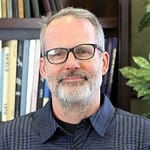
Chemistry Professor Bret Findley
The award established Saint Michael’s faculty as leaders in recognizing that workers in science fields need better training in the quantitative and computational skills essential to modern data- and modeling-driven life sciences research, say faculty team members including Bret Findley of the chemistry faculty, who helped initiate use of the funds for these recent summer projects.
Mitchell Andrea said initially he was “just hoping to get an internship near home” in New Hampshire once students got sent home in March, until Professor Findley emailed him in May about potentially completing research with him — “and ever since then I was fully on board.”
As they developed the idea for their project, Findley felt it would be a good idea to add mathematics Professor Ashline to the project since the work involved developing connections between chemistry and mathematics.

Mathematics Professor George Ashline
“We found that numerous chemistry pedagogical journals include articles that avoid the use of calculus and mathematics, and we developed our project to show that having a strong background in both fields, which is the overall idea behind the S-STEM program, can be extremely beneficial,” said Andrea. “We worked to develop exercises that can be used in St. Mike’s classrooms, specifically Calculus I, Calculus III, and General Chemistry II that explicitly show students the connections between the two fields and how they build off one another.”
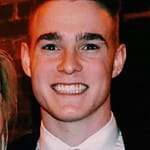
Mitchell Andrea
Andrea said the project benefits him personally, “as I was provided a platform to help educate other students at St. Mike’s, and it helps those students to see that having an S-STEM background can be very helpful in their course of studies.”
Flexibility broadens opportunities
Reece Pawlaczyk said his plan with mentor Findley on their project is to submit the lab they are developing (which introduces the use of computational chemistry) to either the Journal of Chemical Education of The Chemical Educator so that it may be published as an article. His original summer plan was to attend a “Research Experiences for Undergraduates” (REU) program at another college after he was accepted into such programs at both Johns Hopkins and Boston University, but then both of those programs canceled due to the coronavirus pandemic.
After the spring semester ended, Pawlaczyk, being a Burlington-area resident (his dad Joe Pawlaczyk works in the Saint Michael’s Information Technology Department), continued working at Green Mountain Antibodies, a biotech company in Winooski that has a longstanding and productive relationship with St. Mike’s, both in offering internships to students and/or hiring them after graduation.
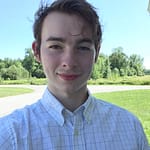
Reece Pawlaczyk
“An advantage of doing this research opportunity over Zoom is that the flexible schedule allowed me to continue working full-time at a biotech company and gain another summer of research experience in preparation for graduate school,” he said. “This will be a great opportunity for me to undergo the process of submitting an article to a chemistry journal, and also will provide next year’s physical chemistry students with a new lab which may prepare them for the use of computational chemistry in their future fields of study.”
Sam Berry was a student in Professor Alain Brizard’s College Physics II course in the spring of 2020. “In early spring 2020, Sam told me that he had been selected for a prestigious SULI (Science Undergraduate Laboratory Internship) internship at Ames National Laboratory in Iowa, sponsored by the U.S. Department of Energy, during the summer of 2020. In the past 10 years, two physics majors had obtained SULI internships at the Princeton Plasma Physics Laboratory. As a result of the COVID-19 pandemic, Sam’s internship was postponed by one year and Sam found himself ‘unemployed’ for the 2020 summer,” Brizard said.

Physics Professor Alain Brizard
In mid-May 2020, Brizard suggested that Berry work with him on a mathematical project involving oscillating chemical reactions that exhibited similar properties to a model (FitzHugh-Nagumo) for neuron excitation dynamics that was presented to students who took a Brizard biophysics course in the spring of 2018. “I told Sam that I could work with him only from mid-May to the end of June, because of my work commitments funded by the National Science Foundation in July and August of 2020. When I informed Bret Findley of the nature of my project with Sam, he suggested that Sam’s work might be funded by the NSF S-STEM grant. The funding for Sam came through and Sam and I completed a very challenging project that will undoubtedly result in a peer-reviewed publication that will be written in the fall. Sam will also present his work during a fall seminar as part of the NSF S-STEM funding requirements.”
Sam Berry said his work with Brizard exploring oscillating chemical reactions involves “transforming known chemical equations into new equations that could be manipulated more freely to create mathematical simulations that could observe the cycles using different variables.” Once created, the models were used to find key points in the cycle which, when used with the manipulated equations, “helped find an equation that estimated the period of the cycle,” he said.
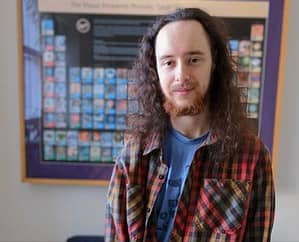
Sam Berry
Berry said the project for him “served as an introduction to the branch of theoretical chemistry and it allowed me to learn a bit about the main subject matter of chemical kinetics.” Further, he said, the project can also aid in the broader scientific world “by contributing to a deeper understanding of two of the observed models by finding a possibly new period equation and one and using a different approach in another.”
“In general, I also feel that a major benefit of this experience was to show that it is possible to find research opportunities on campus. If my stumbling into a research experience was any indication, I would say if a person contacts a professor, it is possible that research opportunities can be found,” Berry said.
For mentor and chemistry Professor Findley, “what’s cool about this is that these are students who have done research this summer despite the research programs of the College all being shut down, so we’ve still managed to have some summer research experiences going on despite the pandemic — we were creative enough to come up with projects that could be done remotely.”
